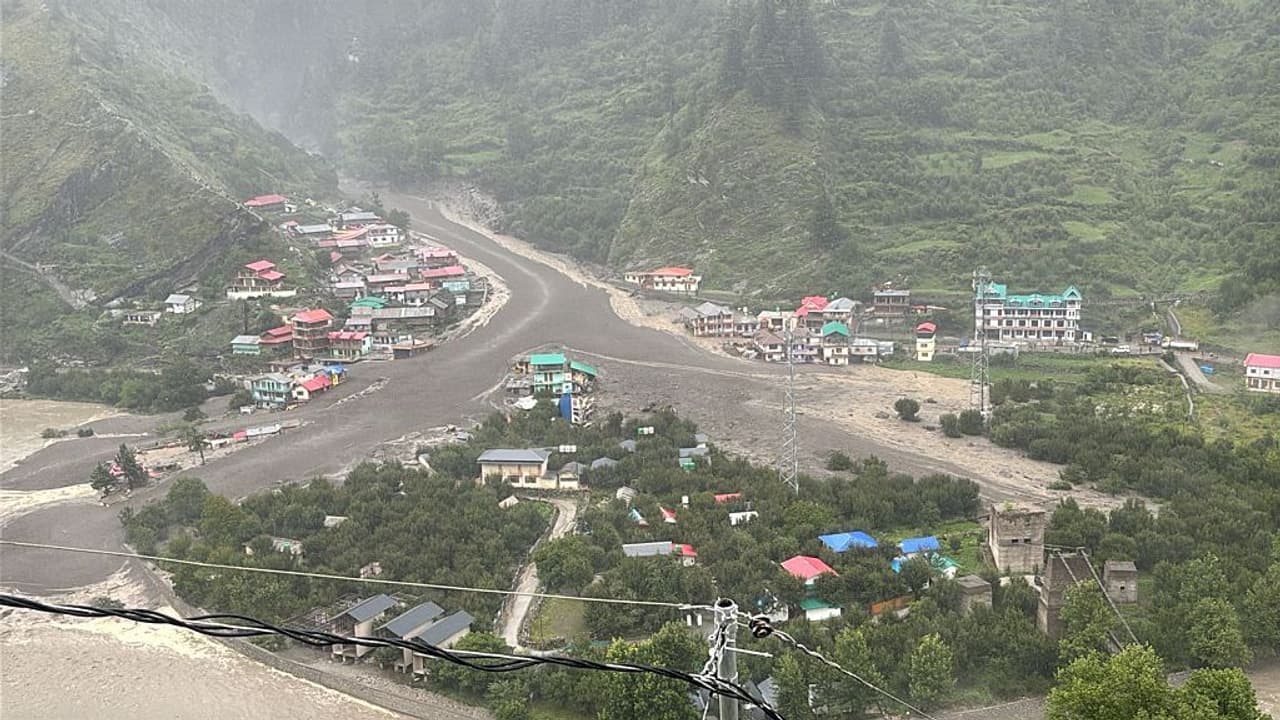As flash floods swept through Uttarkashi’s Dharali village on Tuesday, leaving a trail of destruction, a deeply moving online post by Soumya Parmar, business owner at Himalayan Resorts (Prakriti The Retreat), has put a human face to the tragedy.
As flash floods swept through Uttarkashi’s Dharali village on Tuesday, leaving a trail of devastation, a deeply moving online post by Soumya Parmar, business owner at Himalayan Resorts (Prakriti The Retreat) in Dharali, has put a human face to the tragedy. In the wake of the disaster, social media has been flooded with commentary blaming “greedy development” in the hills. Parmar, while acknowledging the need for better planning and safeguards, challenges these sweeping judgments. “Last 24 hours has been a full nightmare for us,” begins Parmar’s LinkedIn post. Her resort, nestled just a few kilometers from the worst-hit area, stood in the path of nature’s fury. With phone lines down and two staff members initially unaccounted for, she painted a vivid picture of panic, uncertainty, and heartache.
“I am overwhelmed with the love and support from our customers… At the same time, I am dealing with a situation where families, customers are calling asking for the whereabouts of their people. It’s been by far the most stressful situation to have dealt with in my career,” she wrote.
But Parmar’s message wasn’t just a distress call — it was a passionate plea for perspective.
“We know people who have lost everything — families, lives, and shops,” she said, highlighting the plight of locals who have built small businesses like grocery stores and homestays. “It’s easy for several to relocate to Mumbai, Bangalore, Gurgaon… but there are locals who don’t want to leave their hometowns… why should they?”
She questioned the alternatives available to mountain residents. “Tourism brings employment for a whole ecosystem,” she noted. “There is no Swiggy or Zepto here. The grocer who supplies essentials to the entire area has lost his shop. These people are crucial for survival in these terrains.”
Parmar also posed tough questions for the authorities, providing an insight into the other side of the debate on Survival and Sustainability.
Better administrative planning, including building regulations away from vulnerable “khalas” (natural water drainage lines). Early warning systems like sirens or alarms to allow timely evacuations. Viable local economies, urging a rethink of how mountain residents can earn without abandoning their roots.
Her message ends with a poignant reminder to tourists and outsiders: “Next time you travel to the hills, don’t ask for discounts. Ask and learn how they survive there. Understand how difficult it is for them, and maybe support them in any way you can.”
In a region where climate disasters are becoming tragically frequent, Parmar’s words resonate far beyond a business owner’s anguish. They echo the collective voice of mountain communities fighting for survival — with dignity, resilience, and hope.
She wrote, “For now, just pray for the people who have lost lives, their families, and pray for the safety of the people in the hills of Uttarakhand and also Himachal.”
Unchecked Construction, Tourism Push, Human Interference Triggered Uttarkashi Disaster: Experts
Unchecked construction and human interference in the ecologically fragile Bhagirathi Eco-Sensitive Zone (BESZ) — spanning 4,179 sq km from Gaumukh to Uttarkashi may have significantly worsened the impact of the flood that ravaged Dharali village near Gangotri in Uttarkashi district, according to environmentalists. Experts said that the scale of devastation points to deeper, systemic issues rooted in years of unregulated development in one of the Himalayas’ most vulnerable regions.
According to a TOI report, calling for urgent reforms and stricter enforcement of land-use regulations along the Bhagirathi River and its tributaries, Mallika Bhanot, a member of BESZ monitoring committee, said, “This once again shows how vulnerable the Himalayas are, and we must wake up and stop playing with our environment. Any vulnerable area requires protection and conservation. Unregulated anthropogenic (human-induced environmental change) activity only adds to the risk, as was evident in the shocking footage of the Kheer Ganga stream turning into a torrent.”
On the ground, residents said the push to boost tourism revenue is fuelling unsustainable development. “In the race to earn from tourism, tree felling and construction are happening at an unprecedented scale. There are no robust systems in place to manage disasters in vulnerable stretches of BESZ, despite the region having witnessed similar devastating floods in the past,” said Suresh Bhai, an Uttarkashi based environmentalist and founder of the Himalaya Bachao Andolan.
